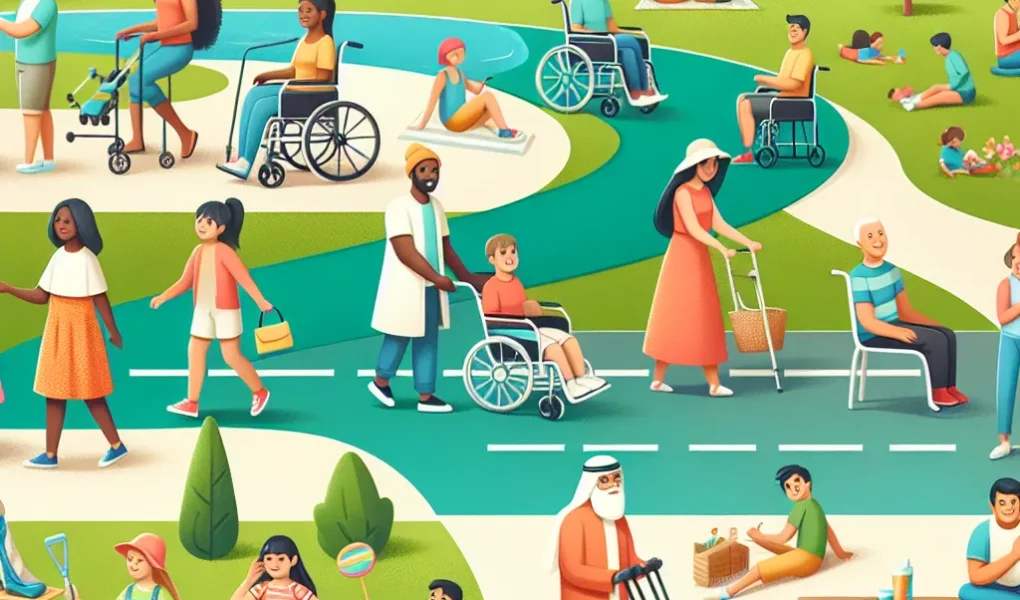Improving Accessibility in Urban Parks and Recreational Areas
Improving accessibility in urban parks and recreational areas is a crucial aspect of addressing the challenges of accessibility in public spaces. Urban green spaces are essential for the well-being of all individuals, and it is important to ensure that they are inclusive and accessible to people of all abilities. There are several key strategies that can be employed to enhance accessibility in these areas.
One effective approach is to provide accessible pathways throughout the park or recreational area. This includes ensuring that the paths are wide enough for wheelchairs and strollers, have gradual slopes, and are made of materials that are easy to traverse for those with mobility challenges. Moreover, incorporating rest areas along the paths can offer opportunities for individuals to take a break, especially important for those with limited mobility.
Another important consideration is the inclusion of accessible facilities within the park, such as restrooms, picnic areas, and playgrounds. These facilities should be designed with universal access in mind, incorporating features such as ramps, handrails, and designated parking spaces. Furthermore, the availability of inclusive recreational equipment, such as adaptive swings and fitness stations, can greatly enhance the experience for individuals with disabilities.
Furthermore, the provision of sensory-friendly spaces within urban parks is an emerging trend aimed at accommodating individuals with sensory processing disorders. These spaces are designed to minimize sensory overload, with features such as quiet areas, tactile elements, and soothing color schemes. By incorporating these spaces, urban parks can become more welcoming to a wider spectrum of visitors.
Incorporating these strategies into the design and management of urban parks and recreational areas is essential for creating truly inclusive public spaces. By focusing on improving accessibility, these spaces can become welcoming and enjoyable for all community members, regardless of their physical abilities.
Addressing Mobility Challenges in Public Transportation Hubs
Addressing mobility challenges in public transportation hubs has become a critical issue in creating more accessible public spaces. People with disabilities face numerous obstacles when navigating public transportation, from inaccessible platforms to lack of proper signage and inadequate facilities for those with mobility impairments.
To address these challenges, public transportation hubs should prioritize the installation of ramps, elevators, and tactile paving to guide individuals with visual impairments. Additionally, ensuring that there are designated spaces for wheelchair users on buses, trains, and trams is essential for creating a more inclusive public transportation system.
Furthermore, providing accessible shuttle services and implementing real-time tracking systems can greatly enhance the mobility options for individuals with disabilities. It is also crucial for transportation authorities to engage with the disability community to gain insights into their specific needs and challenges, leading to more effective solutions.
In conclusion, addressing mobility challenges in public transportation hubs is a key aspect of creating truly accessible public spaces. By prioritizing the needs of individuals with disabilities and implementing comprehensive accessibility measures, public transportation can become more inclusive and welcoming for all members of the community.
Creating Inclusive Environments in Community Gathering Places
Creating inclusive environments in community gathering places is essential for addressing accessibility challenges in public spaces. The design and layout of public areas such as parks, community centers, and recreational facilities play a crucial role in ensuring that individuals of all abilities can fully participate and enjoy these spaces.
When planning and developing community gathering places, it is important to consider accessibility features such as wheelchair ramps, designated parking spaces for people with disabilities, and tactile paving for individuals with visual impairments. Additionally, providing accessible seating, restrooms, and signage with braille and large print options can significantly enhance the inclusivity of these spaces.
Incorporating universal design principles, such as wide pathways, adjustable height counters, and sensory-friendly elements, can further contribute to creating welcoming environments for everyone, regardless of their physical or cognitive abilities. Moreover, consulting with diverse communities and individuals with disabilities during the planning process can offer valuable insights and ensure that the designed spaces meet the needs of all community members.
By prioritizing inclusivity and accessibility in the development of community gathering places, local authorities and planners can foster a sense of belonging and participation among all residents. These efforts not only enrich the overall community experience but also reflect a commitment to equity and diversity in public spaces.



